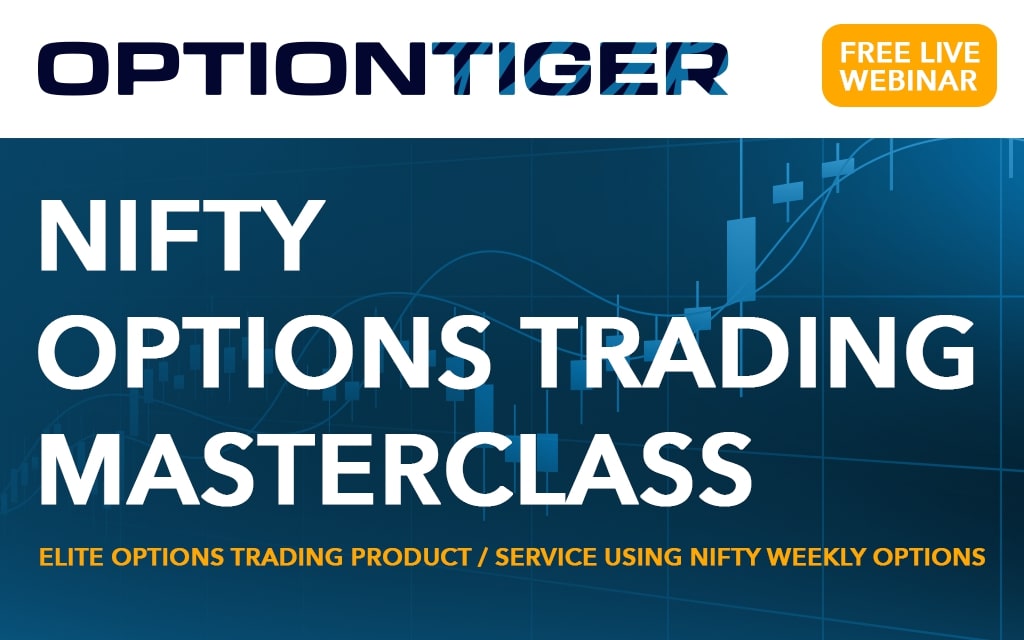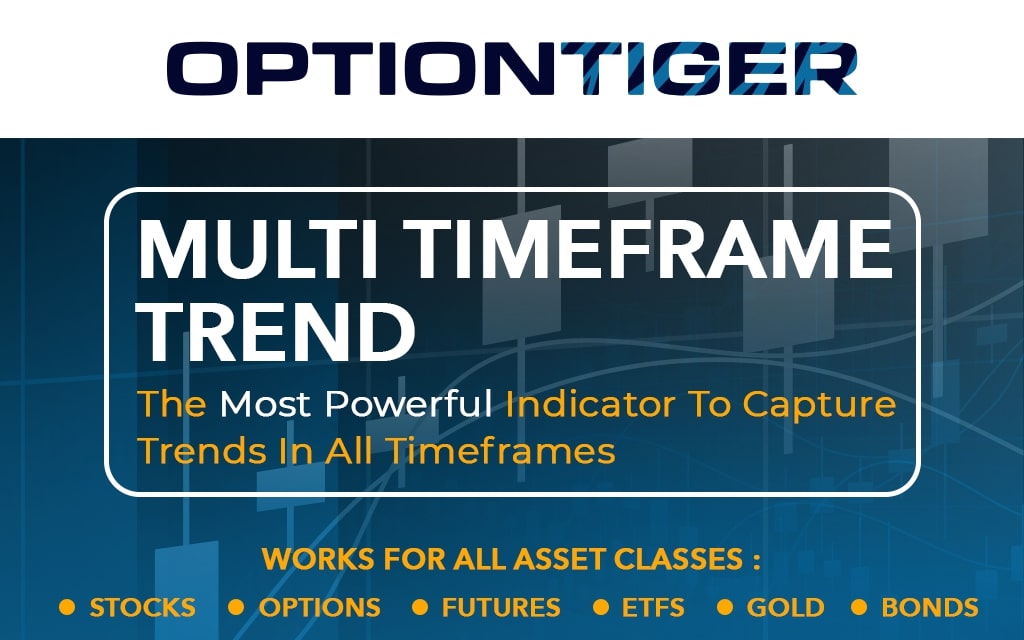Beginner Options & Financial Markets
Optiontiger offers courses and elite systems for all levels of traders
ABOUT THIS COURSE
If you’re a complete Beginner to Financial Markets, the first 4 courses are ideal for you. Options have a learning curve. The theory and foundation is critical. Every Pro started here, however it is important to start the learning process in a structured manner. In this Beginners Bundle of Options trading courses, Call Options and Put Options are explained in simple layman’s language that anyone can understand. These Options trading courses uses real-world examples for Call Options and Put Options.
In the case of Call options, a real estate example is used, and in the case of Put Options, an Insurance case is used. Understanding these two basic building blocks is critical to understanding the other Options trading courses.
It is recommended to follow the chronological order as laid out on this page to get the most out of these Options trading courses. Time Decay, Implied Volatility and the Option Greeks are key mathematical concepts that underpin the Options market, and these are explained in great detail in these Options trading courses.
These Options trading courses also contain Live trading examples of Buying Call options, Selling Call Options, Buying Put Options, and Selling Put Options by choosing a stock, performing Technical Analysis for good trade entry points, and finally each trade goes through a week or two until the exit. Please also go through the complete list of Mini courses which is a good supplement to these Options trading courses. Mini courses take a single concept and takes a deep dive into that concept.
Courses in this Module
Learn the global “macro" Finance and Investment cycles and how big money is invested. Core investing principles and detailed study of all the market and stock terminology. Detailed analysis of Stocks, Investing styles, and Best Practices. Ideal place to start for newcomers to Financial Markets.
Course Overview
- The Global Money Machine
- Live Trading Platform
- Asset Classes
- What is Investing in Stocks
Mutual Funds and ETFS or Exchange Traded Funds are Pooled investment vehicles. Thousands, perhaps a lot more individual and institutional investors pool in smaller amounts of money which is managed by a Fund manager. The Fund manager actively manages both types, saving investors the effort of research and stock picking. Both types have pros and Cons, but are a good choice for a first investment.
Course Overview
- Macro approaches
- Stable trading environment
- ETF Choices are dazzling
- Index and Sector based
Bond Markets are extremely important for everyone to understand even if you don’t trade them, as they directly impact day to day parameters like Interest Rates, Inflation and impact of money printing. Bond markets also compete with Stock markets for investment capital, and you’ll see that they trade in opposite directions for the most part, but sometimes these correlations break down.
Course Overview
- Bond Market Details
- Bonds and Interest Rates
- Risk Hierarchy in Bonds
- Bonds and Inflation
There are several types of Commodities – Precious metals, Industrial metals, Agricultural commodities as well as Oil and others. The Agricultural Commodities are generally esoteric, but Gold and Oil are popular. Commodities are also traded around the world in the US Dollar, so the price of commodities is dependent on the price of the US Dollar. Commodities also fluctuate in prices based on Supply and Demand.
Course Overview
- Various Commodities
- Trading in Oil
- Discussion of Gold and Silver
- Agri commodities
Forex or Foreign Exchange markets are complex, and are the largest in the world, with an average of $5Trillion worth of currencies being traded every single day around the world. Forex markets can be traded by several methods. Some of them are the Spot Forex market, Currency Futures, and Currency ETFs. There are also Options on Currency ETFs.
Course Overview
- Discussion of Forex markets
- Live Trading
- High Leverage
- Factors affecting Forex rates
Welcome to the world of Options and Options trading strategies for Beginners. The Call Option is the most basic of Options, and therefore the best to study first. Buying a Call Option is just like buying a stock – you expect the price to go up, and sell it for a profit. But what exactly is an Option, and how is it different from a stock. Most newcomers to Options have difficulty in understanding Options because training material jumps right into Options jargon. In this course on Option trading strategies for Beginners, we’ll study the Call Option in detail. This course uses a real-world example in real estate to explain how a Call Option can be constructed for a situation. We also introduce what an At-The-Money, Out-of-the-Money and In-The-Money Option is, using our real estate example. Finally, everything is demonstrated on a Live trading platform with a good example of Option trading strategies for Beginners.
Course Overview
- No Jargon Option Strategies for Beginners
- What are Call Options
- Live Trading
- Option Pricing factors
- Options Risk and Reward
- For Newcomers
The Put Option is the exact opposite of a Call Option. Put Options increase in value when the value of a stock or index drops in price. We define what a Put Option, and just like we did in the Call Option, we consider a real-world example of a Put Option. Fortunately, we have excellent examples of Put Options in real life – when we buy Insurance for our car or home, we are actually buying a Put Option. This example should make it absolutely clear what a Put Option is. The course looks at buyer and seller perspectives in a Put Option transaction, and analyzes the breakeven, and profit and loss profiles, all using the real world example first. Finally, we look at expiry and settlement procedures for Put Options.
Course Overview
- Calls and Puts
- Put Option example
- Option Pricing Factors
- Put Options and Protection
- Types of Options
- Risk and Reward of Put Options
All Options are “wasting” assets i.e. their value goes down as the Options approach expiry. In the Options market, Options series expire every month in general, and then there are Weekly or Quarterly expiry series for the bigger stocks and indices. Every Option is exposed to time decay. The less time there is for expiry, the less value an Option will have, and the reverse is also true. We consider the same examples from the Call and Put Option courses – Real estate example for Calls, and Insurance for Puts. Finally, we take you to a live trading platform and show you Time Decay in Options, in action in the second chapter of this course. We look at real AAPL Options and understand precisely how Time Decay works. Time Decay in Options works exponentially, meaning with lesser and lesser time to expiry, the Option time decay will be more with each passing day. Finally, at expiry, the Option will have only Intrinsic value.
Course Overview
- Concept of Time Decay in Options
- Buyer and Seller differences
- Option Time Decay Curve
- Real world examples
- Time decay in Options and Moneyness
- Time Decay in action
Implied Volatility is probably the hardest of all the parameters But what is Implied Volatility. To understand Implied Volatility in options, we need to understand Volatility, Historical Volatility, and Future Expected Volatility for the Stock.
Every Option has a certain Implied Volatility that is calculated from the Option price, and this can be a real “wild card”. Make no mistake; miscalculations on Implied Volatility can break an Options position.
We need to understand the concept of Options Implied Volatility in simple terms, so we use our real-world examples again to grasp the concept thoroughly. Then we look at a great example of NFLX and CAT Options that clearly demonstrates Implied Volatility in action.
Options Implied Volatility calculations are ultimately backed out from the Option prices quoted in the Options market. Changes in Implied Volatility impacts Buyers and Sellers of Options very differently, and there is also a twist to this phenomenon.
Course Overview
- Types of Volatility
- Implied Volatility in Options
- Implied Volatility and Option Prices
- Buyer Seller perspectives
- Impact of Option expiry
- Impact of Option Moneyness
If you’re the pilot of an aircraft, the Option Greeks are your instrument panel. If you don’t manage your instrument panel properly, well…you get the picture. So if you are wondering what is option greek, then our course is sure to meet your expectations. Understanding what Option Greeks are is absolutely critical to every Option position. We break this course into easy to understand chapters for all the four Option Greeks – Delta, the king of all Option Greeks. Gamma – the silent operator. Theta – every Option seller’s dream. And Vega – Watch out for this one.. Most beginners to Options tend to ignore the Greeks but that pulls you back from exploiting the investment potential in the market. Master what Option Greeks are, and you’ll shave off months of learning curve. Not to mention, you can then fly your aircraft on “auto-pilot" (with help from the Option Greeks).
Course Overview
- Learn about all 4 Option Greeks
- Why Option Greeks are the most important theory in Options
- Greeks Represents the Math Formulas in Options
- Greeks are opposite for Buyers and Sellers of Options
Your Options position is always going to be most responsive to the movement of the stock itself. And Delta measures this sensitivity to price movement, and that’s why its the King of the Greeks. Delta plays many roles. It represents the directional bias of your position, and it also represents the approximate probability of the Option going In-The-Money, and this value can change dramatically.
Course Overview
- King of all Greeks
- Calls and Puts Delta
- Delta and Probability
- Delta and Moneyness
Gamma is the second derivative of Price, and the first derivative of Delta. Gamma represents the rate of change of Delta, and Delta represents the rate of change of Price. If this sounds confusing, please understand every Options trader has a challenge with Gamma, and it sinks in only over time. Hopefully this class on Gamma will go a long way in helping get a grasp of Gamma.
Course Overview
- Gamma is second derivative of Price
- Live Demonstration
- Gamma is a hard Greek to understand
- Gamma critical during expiry
Theta is the Option seller’s dream. Theta is the time decay for every Option represented by a daily loss number. You can create any number of exotic strategies with Theta. Theta makes Options come to life. This is by far the most exciting greek, as well as the Greek that a majority of sophisticated Options strategies are based upon. Time Decay is the equalizer between an Option buyer and seller.
Course Overview
- Time Decay in Options
- Live demonstration of Time Decay
- Buyer and Seller Perspectives
- Time Decay and Moneyness
Vega represents the amount by which an Option price will increase or decrease for a 1% change in the Implied Volatility of the stock. Vega is somewhat of an intangible, hidden Greek, which makes its impact incredibly powerful, with large effects on Option prices. Implied Volatility is a Wild Card because of this, and it would serve every Options trader very well to always have one eye on Vega.
Course Overview
- Vega is a Wildcard
- Live Demonstration
- Buyer Seller Perspectives
- Vega and Moneyness
Important Options trading concepts for all Stock traders wanting to apply simple techniques for high performance trading. If you’re a Stock trader that was always interested in using Options for better performance, but was always too confused as to how to use them, this course is for you. You’ll learn how to sell a Stock at a much higher price that what it’s currently trading for.
Course Overview
- Sell Stock at High prices
- Live Demonstration
- Consistent and Repeatable
- Make Income
This is another Stock and Option combo strategy that will enable you to buy Stock at much lower prices that what its currently trading for in the Market. This strategy can also be repeated consistently to pick up Stock you’re interested in. This is particularly useful for Stock traders who are used to a Buy and Hold strategy, but can pick up stock at very low prices.
Course Overview
- Simple Combo strategy
- Live Demonstration
- Consistent and Repeatable
- Make Income
If you have a Stock position, and are concerned of a Price drop in the medium term, you can use a combination of Stock Options trading in a cost-effective way to hedge the stock. It’s just like buying Insurance for your Stock portfolios. And just like insurance, you can provide various levels of insurance coverage, depending upon the amount of hedge desired. These Stock Option trading combo strategies can provide a substantial amount of protection for long-term stock holdings without having the need to liquidate the stock position. There are several such Stock Option trading combo strategies, and using Options to hedge Stock is one of them.
Course Overview
- Protection from Crashes
- Live demonstration
- Various types of insurance
- Sell Stock at High Prices
This course looks at all the practical considerations of trading Options through a Broker and an Options exchange like the CBOE. The Options market has a number of terms that we need to be aware of. Starting with terminology differences like “Long" and “Short", we look at all the details that go into the Options market, including the all important role of Market Makers on every Options trade.
Course Overview
- Various Order types in Options
- Exercise and Assignment of
- Options
Open Interest, Volume and their importance - Role of a Market Maker
- Expiry Series of Options and Contract details
- Commissions, Brokerage and other costs
- Regulation T Margin and Portfolio Margin
- Bid Ask Spreads and Slippage
Buying a Call Option is the most basic of all the Option strategies and is ideally suited to traders who want to learn Options trading. It is the most efficient strategy to optimize a bullish outlook on a stock. Most people wanting to learn Options trading will buy a Call Option because it is similar to buying a stock. In this options trading strategies course, we take the example of Chipotle Mexican Grill (CMG) and show how the trade played out. We analyze the rationale behind entering the trade, the risk/reward profile, chart analysis and point of entry, choice of expiry and “moneyness" of the Option, time decay considerations, margin requirements, profit expectations, exit criteria, Greek analysis, its Profit and Loss profile and various other considerations. We provide a 360-degree analysis before trade entry. This is a real trade and over 15 days, and we navigate the trade to its exit point.
Course Overview
- Learn Options Trading On CMG
- Trade Analysis Before Entry
- Chart Analysis for Entry/Exit
- Greeks Analysis
Selling a Call Option is a strategy to optimize a bearish outlook on a stock. In this course, a real trade example shows how the trade played out. We analyze the rationale behind entering the trade, the risk/reward profile, chart analysis and point of entry, choice of expiry and “moneyness" of the Option, time decay considerations, margin requirements, profit expectations, exit criteria, Greek analysis, its Profit and Loss profile and various other considerations. We provide a 360-degree analysis before trade entry. This is a real trade and over 15 days, and we navigate the trade to its exit point.
Course Overview
- Real Live trade over 2 weeks
- Entry and Exit analysis using Charts
- Trade Rationale analysis
- Greeks and P/L Analysis
Buying a Put Option serves two purposes – exploit a bearish move in the stock or be the ultimate protector of your stock. In this part of the course, we take the example of the Euro ETF (FXE) and show how the trade played out in about 25 days time. We analyze the rationale behind entering the trade, the risk/reward profile, chart analysis and point of entry, choice of expiry and “moneyness" of the Option, time decay considerations, margin requirements, profit expectations, exit criteria, Greek analysis, its Profit and Loss profile and various other considerations. We provide a 360-degree analysis before trade entry. We show you how to “let your winners run" in a controlled manner.
Course Overview
- Criteria for Long Puts
- Milking profits
- Live Trade example over 2 weeks
- Scaling out of huge profit positions
Selling a Put Option exploits a bullish or flat move in the stock and a Live trade on GS is done over 2 weeks. We analyze the rationale behind entering the trade, the risk/reward profile, chart analysis and point of entry, choice of expiry and “moneyness" of the Option, time decay considerations, margin requirements, profit expectations, exit criteria, Greek analysis, its Profit and Loss profile and various other considerations. We provide a 360-degree analysis before trade entry. We show you how to “let your winners run" in a controlled manner.
Course Overview
- Analyze criteria for Selling Puts
- Chart Analysis for entry and exit
- Live Trade on Goldman Sachs
- Greeks and P/L Analysis
The Option strategy optimization course brings all the 4 Options strategies together. The 4 strategies are comprised of 2 bullish and 2 bearish strategies, but how and when should we choose a particular strategy over the other. We create a helpful “4 strategies box" to distinguish and connect one strategy to the other. Most importantly, what are all the considerations before we choose a strategy. Our choice of strategy depends not only on what the stock is currently doing, but also on various market externalities as well as a few key Option metrics like Implied Volatility.
Course Overview
- Differentiate between 2 Bull and 2 Bear strategies
- Which Option optimizes the Outlook
- Outlook of trade is key consideration
- External market considerations to think of
This course studies the need for Option adjustments, and why adjustments are as critical to the success of your position as good entry or analysis. We consider all the four basic strategies – the Long Call, Short Call, Long Put, and the Short Put and look at various adjustments to these positions if they get into trouble. Every investor has a “pain point" – this is the point at which they adjust their position. Applying a rigorous approach to this pain point enables investors to control risk while maximizing the opportunity to profit.
The course also discusses various details like early adjustments, over-adjusting and adjusting profitable trades as well as the importance of the investor’s outlook for the stock when considering adjustments.
Course Overview
- Why do we need to Adjust an Option position
- What is over-adjustment and how to avoid it
- Why Adjustments are unique to Options
- Adjustments when trade outlook changes
Mini Courses
Mini-courses focus deep into a particular topic. Mini-courses are about 5 to 10 minutes long.
Most Stock traders have never seen their Stock positions in a visual manner, like with the use of Risk graphs. With some knowledge of Option Risk graphs, a Stock trader can appreciate the nature of stock that is most scary – unlimited profits but also unlimited losses until 0.
A trading platform can be intimidating to newcomers, and in the case of Options it is definitely the case. Option screens have numbers running all over the screens with various color-coded parameters. This Free course explains in simple terms all the elements of an Option Quote screen.
Stocks require a lot more capital deployed than Options. Options are inherently leveraged instruments, and for similar positions, an Option would require only 10% to 20% of the capital required for Stocks. This mini-course explains these differences in a detailed manner.
In this Free course, we explore Risk Graphs in detail, and its relationship with the Greeks. Risk Graphs are some of the most important visual tools available to the Option trader.
Join Our Community For Free
Option Tiger is dedicated to all things Options and Markets. Whether you’re a beginner or advanced, get the most sophisticated Options and Market content.





